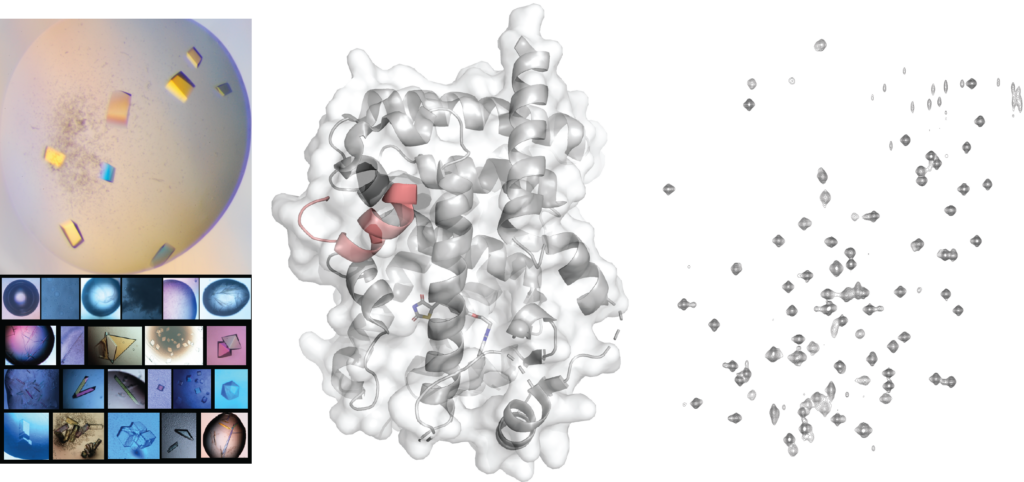Our research has focused on the structural basis of binding mechanism between synthetic/natural ligands and nuclear receptors (NRs) or G protein-coupled receptors (GPCRs), two protein superfamilies as drug targets for approximately 50% of all FDA approved drugs. Using a combination of structural methods (NMR spectroscopy, X-ray crystallography, and Cryo-EM) along with biophysical and cellular functional techniques to understand the structural and dynamic mechanism of action of endogenous and synthetic ligands with NRs, GPCRs and other important receptors that associate with human diseases, to guide structure-based drug discovery and develop therapeutic approaches.
据统计,美国食品药品管理局(FDA)批准的靶向药物中约50%以激素核受体(Nuclear Receptors, NRs)与G蛋白偶联受体(G protein-coupled receptors,GPCRs)为药物靶标。课题组工作围绕关键核受体与G蛋白偶联受体等具有内源信号分子作用位点的药物靶标以及未知配体的孤儿受体展开,深入研究天然或合成药物小分子对靶点受体结构与相关功能的影响并应用于基于结构的药物研发。结合结构生物学(蛋白质核磁共振( Protein NMR)、X-射线晶体衍射(X-ray Crystallography)、冷冻电镜(Cryo-EM)、氢氘交换质谱(HDX-MS)、化学交联质谱(XL-MS))、生物物理学、细胞生物学等方法全面研究药物小分子-受体的分子识别机制与相关受体的转录调控机理。利用分子模拟计算与生物物理方法高通量(HTS)筛选并发掘药物前体与孤儿受体的内源配体。通过干细胞与动物模型探究药物小分子体内活性与安全性,为神经与代谢疾病的防治提供临床参考。
